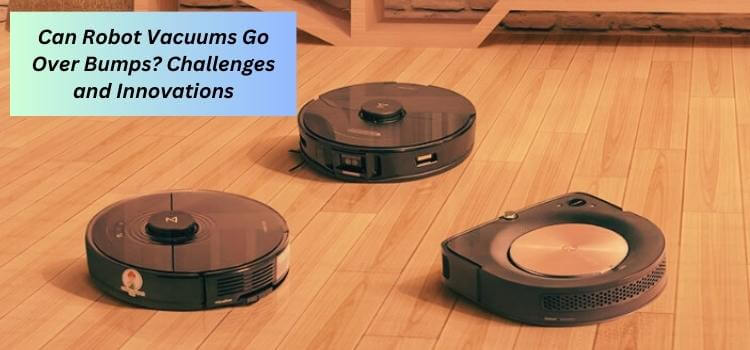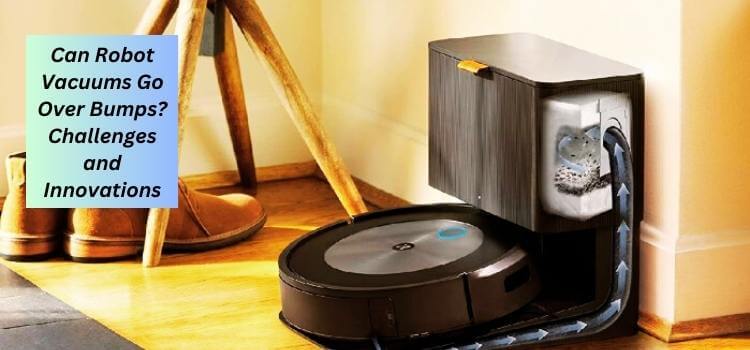As an Amazon Associate, I earn from qualifying purchases
Discover whether robot vacuums can overcome bumps and their technical capabilities, benefits, challenges, and prospects. Learn how these devices handle various obstacles and improve cleaning efficiency.
Robot vacuums have revolutionized household cleaning, offering convenience and efficiency. However, one common question among potential buyers is whether these devices can navigate over bumps, thresholds, and various floor transitions. This article delves into robot vacuums’ obstacle-navigation capabilities, providing a comprehensive analysis of their features, limitations, and advancements in the field.

Technical Specifications
Motor and Suction Power
Robot vacuums have varying motor strengths and suction powers, which directly affect their ability to handle bumps. Higher-end models typically feature more robust motors that can provide the necessary torque to climb over obstacles.
Wheel Design and Suspension System
The design of the wheels and the suspension system plays a crucial role in a robot vacuum’s ability to traverse uneven surfaces. Some models have larger, more flexible wheels and advanced suspension systems for higher thresholds.
Sensors and Navigation Technology
Modern robot vacuums utilize a range of sensors, including infrared, ultrasonic, and LiDAR, to detect and navigate obstacles. These sensors help the vacuum map the environment and adjust its path to avoid getting stuck on bumps.
Applications
Residential Use
In homes, robot vacuums need to navigate over various floor types, including carpets, hardwood, and tiles, each with different levels of height and texture changes.
Commercial Use
In commercial settings, such as offices and retail spaces, robot vacuums face additional challenges like door thresholds, cables, and varying floor materials, requiring more advanced navigation capabilities.
Benefits
Convenience and Time-Saving
Robot vacuums save time and effort by automating the cleaning process, which is particularly beneficial for busy households and workplaces.
Improved Accessibility
For individuals with mobility issues, robot vacuums provide an accessible solution to maintain clean floors without physical strain.
Consistent Cleaning Performance
These devices ensure consistent cleaning, maintaining a regular schedule and covering all accessible areas effectively.
Challenges and Limitations
Threshold Heights
Most robot vacuums struggle with thresholds higher than 0.8 inches (2 cm). While some models can handle slightly higher thresholds, significant height differences remain challenging.
Rug and Carpet Transitions
Thick or high-pile rugs can impede a robot vacuum’s movement. Models with higher clearance and more robust motors perform better on such surfaces.
Battery Life and Power
Frequent climbing over obstacles can drain the battery faster, reducing the overall cleaning time and efficiency.

Latest Innovations
AI and Machine Learning
Recent advancements include AI and machine learning algorithms that allow robot vacuums to understand better and navigate their environment, improving their ability to handle bumps.
Enhanced Wheel Mechanisms
Innovative wheel designs and enhanced suspension systems are being developed to improve the climbing ability of robot vacuums.
Smart Home Integration
Integration with smart home systems allows users to control and monitor their robot vacuums more effectively, optimizing their cleaning routes and schedules.
Future Prospects
Improved Navigation Algorithms
Future models will likely feature even more sophisticated navigation algorithms, enabling them to handle more complex environments.
Enhanced Battery Technology
Advancements in battery technology will provide longer run times and quicker charging, making robot vacuums more efficient.
Greater Customization Options
Future robot vacuums may offer more customization options for handling different floor types and obstacles tailored to individual user needs.
Comparative Analysis
Leading Brands and Models
Comparing top brands such as iRobot’s Roomba, Neato, and Roborock reveals differences in their approach to handling bumps and obstacles. Some offer more advanced features and better performance.
Price vs. Performance
Evaluating the cost-effectiveness of various models helps consumers make informed decisions based on their needs and budget constraints.

User Guides or Tutorials
Setting Up Your Robot Vacuum
Here are step-by-step instructions on setting up a robot vacuum, including initial charging, app integration, and mapping the cleaning area.
Maintenance Tips
Regular maintenance tips to ensure optimal performance, including cleaning brushes, emptying the dustbin, and updating software.
Troubleshooting Common Issues
Guide to troubleshooting common issues like navigation errors, poor suction, and connectivity problems.
Conclusion
Robot vacuums have significantly improved their ability to navigate over bumps and obstacles, making them more versatile and efficient. While challenges remain, ongoing technological advancements promise even greater capabilities soon.
As an Amazon Associate, I earn from qualifying purchases